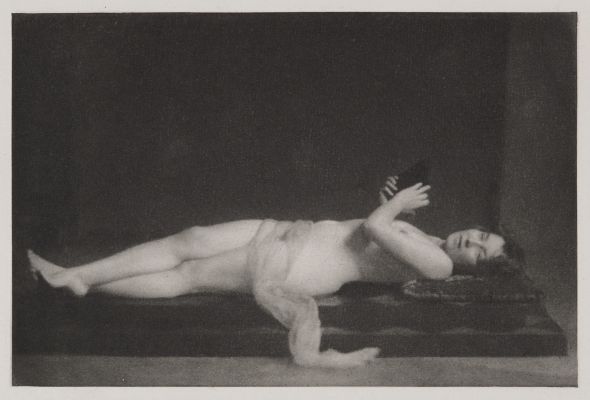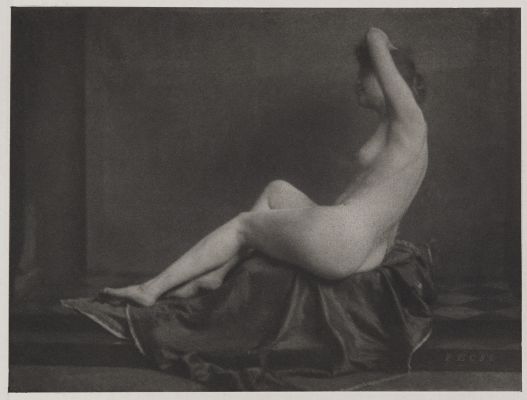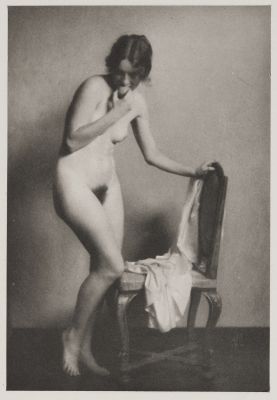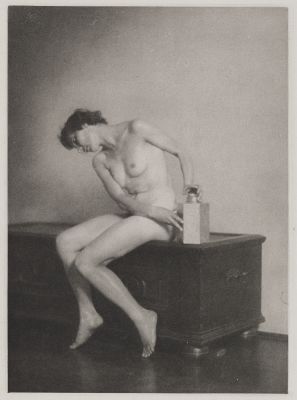
Title
UntitledArtist
Pecsi, Jozef (Hungarian, 1889-1956)Publication
12 Akt AufnahmenDate
1922Process
PhotogravureAtelier
Blechinger & LeykaufImage Size
17.6 x 12.8 cm
This extremely rare portfolio of József Pécsi’s nudes contains twelve photogravures beautifully etched and printed by Vienna atelier, Blechinger & Leykauf. The portfolio is notable for it’s sophisticated design and typography as well as the nudes taken in the peak of Pécsi’s career.
József Pécsi was a Hungarian photographer, innovator, and educator. Born in 1889 into a middle-class family in Budapest (then part of the Austro-Hungarian Empire), Pécsi was schooled in German and maintained lifelong ties with an international photography community. He studied photography at the Lehr- und Versuchsanstalt (Training and research institute) in Munich from 1909 to 1911, and began receiving international recognition soon after graduation. In 1911 he returned to Budapest and opened his own studio, where he also offered instruction to apprentices. In 1913 he established the photography department at the Budapest School of Industrial Drawing, for which he is credited as the founder of photography education in Hungary. He was dismissed from teaching in 1920 due to conflicts with the conservative political regime but maintained his own studio, which served as a gathering place for students, including Eva Besnyö and her friend György Kepes. In 1922 Pécsi was elected vice president of the Budapest Industrial Guild of Photographers and served as editor of the guild’s journal, Magyar fotográfia (Hungarian photography). In 1930 he published the influential book Photo und Publizität (Photography and publicity) to promote the blending of typography, design, and photography in avant-garde advertising, with contributions from Kepes and others. The publication marks his crossover from the Pictorialist style of his early work to the ascendant international modernism of the inter war period. The World War II years took their toll: he hid in Romania for a brief period; his studio and negatives were destroyed by a bomb in 1945; and, upon his return to Budapest, in 1946, financial hardship and an unfavorable regime forced him to take passport photographs to make ends meet. His passion for photography and innovative spirit were not lost, however; in 1952 he patented a combined duplex Pigment print process under the name PEJO. [1]
References
[1] Object:Photo. Modern Photographs: The Thomas Walther Collection 1909–1949 at The Museum of Modern Art. December 8, 2014. moma.org/objectphoto











